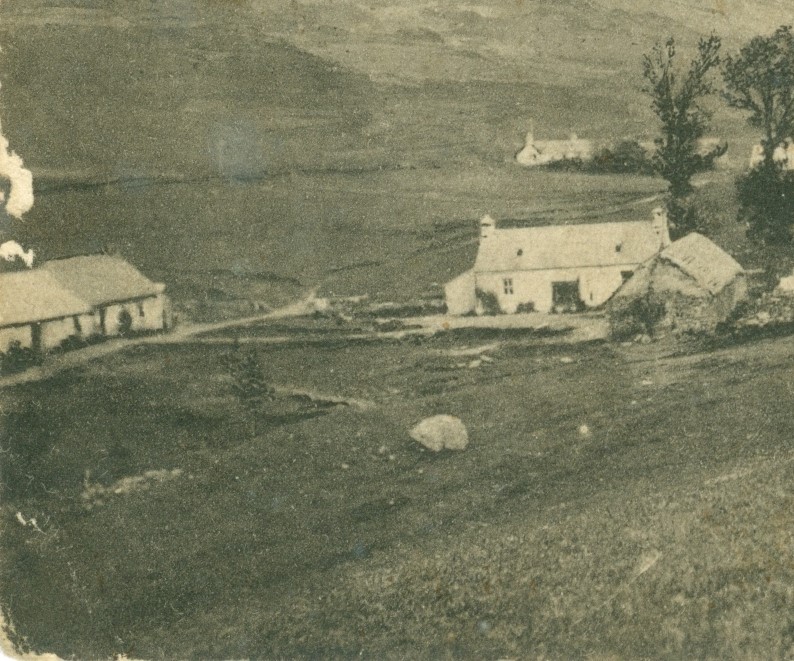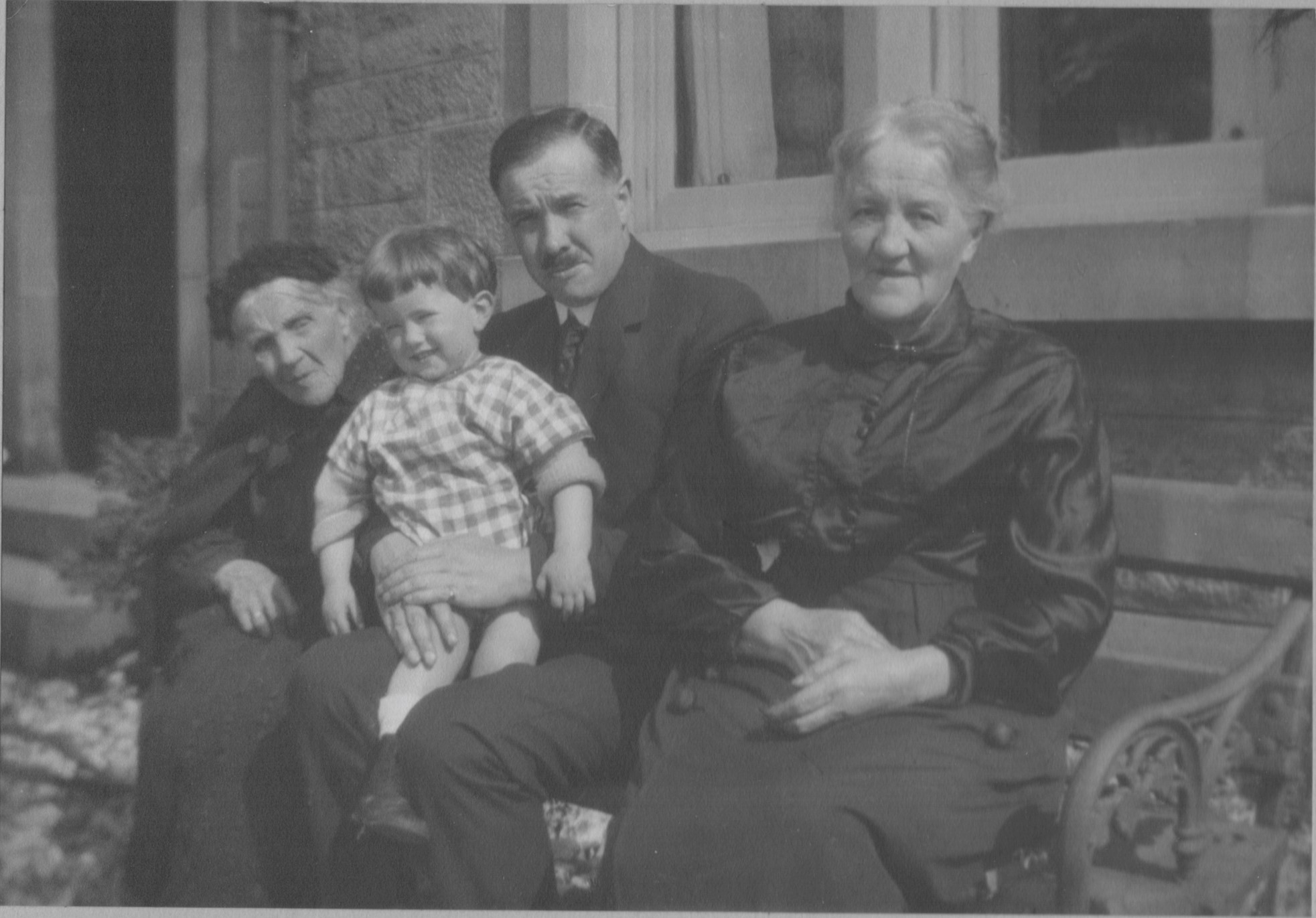Newly released 1921 Census Uncovers New Auchindrain Residents
Do you remember what you were most looking forward to in 2022? For the curatorial team at Auchindrain one of the highlights was always going to be the chance to get our hands on the 1921 census data, helping us to continue building the story of Auchindrain. The 1921 census was subject to the Census Act 1920 which made it an offence to disclose the contents until 100 years after it was conducted, and due to the Covid pandemic we’ve had to wait a bit longer than that too.
The 1921 Census took place on 19th June that year. The first building surveyed was Building A at the east of the site, where we meet 74-year-old Edward McCallum, now a widower, his wife Mary having died in 1911. His sons Edward, 26 and John, 21, are living and working with him as farm labourers and 24-year-old Neil is living at home and working as a stone mason with contractor Mungo Sinclair in nearby Furnace. We know from various sources that Neil did many of the building repairs for the Township during this time, including rebuilding his Dad’s barn, Building B. 57-year-old Mary Clarke has joined the family as domestic help and although she’s not someone we know much about, we’ve heard from Young Eddie MacCallum that a servant of the family died in her bedroom, which was the closet of their longhouse. We believe it could be the unfortunate Mary mentioned here.
Moving on through the township we find that Building D has new inhabitants, as previous head of household Martin Munro moved to nearby Inveraray after he allowed his lease to run out in 1917. This is the McNicol family, comprising of 56-year-old Donald, 57-year-old Catherine, and their 18-year-old nephew William. Donald worked as a roadman for Argyll County Council and nephew William was an apprentice mason for Mungo Sinclair in Furnace. The family first appear in the 1911 census where they’re living in Building W, now our stores and workshop next to the carpark, but Building D would have been more spacious with a better layout for the three of them. Eddie MacCallum, our last tenant, remembered that they stored peats within their loft and “just reached up when they needed one for the fire”.
Next we visit the ‘Stoner’ Munros of building H, where Duncan and Isabella Munro, 64 and 50 respectively, are living with their sons Malcom, 25, and Duncan, 19, both of whom are working for their dad on the farm. Usually at this point in the census we pass through the middle of the site to find Beal Poll living within thatched building M, but this is the first time since 1861 that she’s not there, having died in 1915 at the grand old age of 93.
Within Building R, now our stores by the car park, are the “Daks” Munro family. Duncan and Flora, 69 and 58, are living with their three children Malcolm, Alastair, and Martin. Their other children Donald, John, and Mary have all flown the nest but we know they were frequent visitors. 17-year-old Martin is working as a Bank Clerk for the Union Bank of Scotland, probably in Inveraray, whilst Malcolm and Alastair are working with their father.

The last two occupants of Auchindrain are both a surprise, and tell us a lot about how the poor, old, and ill were treated in the 1920s. First is 84-year-old Lucy MacCalman, who is living in part of Building W. She’s the mother of Flora from Building R and is the last in a long line of widows who came to Auchindrain to live near family members after the death of their husband. For those too old, sick or disabled to work, having connections within an established community such as Auchindrain meant that accommodation could have been traded for acts of kindness to others. We know that Beal Poll, living in the thatched Building M from at least 1861 to her death in 1915, became a pillar of the Auchindrain community helping with washing, harvest, cooking, and looking after children. In exchange she has her house, a small garden for crops, and chickens and is listed as a recipient of coal, ‘distributed to poor people on Inveraray Estate, by instruction of the Duke of Argyll 1900-1’.

The final name on Auchindrain’s 1921 census appears to have been less fortunate. On the public highway west of Auchindrain the Enumerator found John Fraser, a 64-year-old single “vagrant”, born in Spean Bridge near Fort William. Auchindrain has a long history of working with and housing Travellers, but things don’t quite fit for John to have been one of the many Traveller families who would help the tenants of Auchindrain with farm work, or hawk their wares from door to door. Fraser isn’t a typical Argyll Traveller surname and although that in itself isn’t conclusive, the fact that he is travelling alone, without any of his family, suggests a more isolated lifestyle.
Before 1921 there was no poor relief for people who were unemployed but considered to be ‘able bodied’ enough to work. Poor relief historically fell on both the parish and the local landowners and continued this way until the 1845 Poor Law (Scotland) Act, which transferred the role to parochial boards set up within each parish. For those without such support and who were considered sick, destitute and ‘not able-bodied’, parishes built combination poorhouses. For the people of Auchindrain that was the Lochgilphead Combination Workhouse, built in 1861, which combined five parishes including Kilmaconnel and Kilberry, Kilmartin, North and South Knapdale, and Glassary. Conditions were deliberately harsh, and like with Beal in Auchindrain, relief within the community was common and encouraged.
It seems that our John Fraser fell between the cracks of support, being able bodied enough to work and perhaps without close family connections to a place like Auchindrain. Instead, he seems to be walking from place to place in search of a meal, a bed, a bit of work, or just charity. Things may have looked up for him in the years to come; by 1921 the Poor Law Emergency Powers (Scotland) Act 1921 was introduced as a result of the depression following World War One and allowed relief to be granted to people who were considered ‘paupers’ but were not disabled. But it is a chilling testament to how things were in the past for the rural poor that the Auchindrain Census for 1921 includes, in essence, a homeless old man who was tramping the roads in search of a life. How times change… or not.
And that’s that, another slice of Auchindrain life discovered. Here’s to 1931… in 2031.